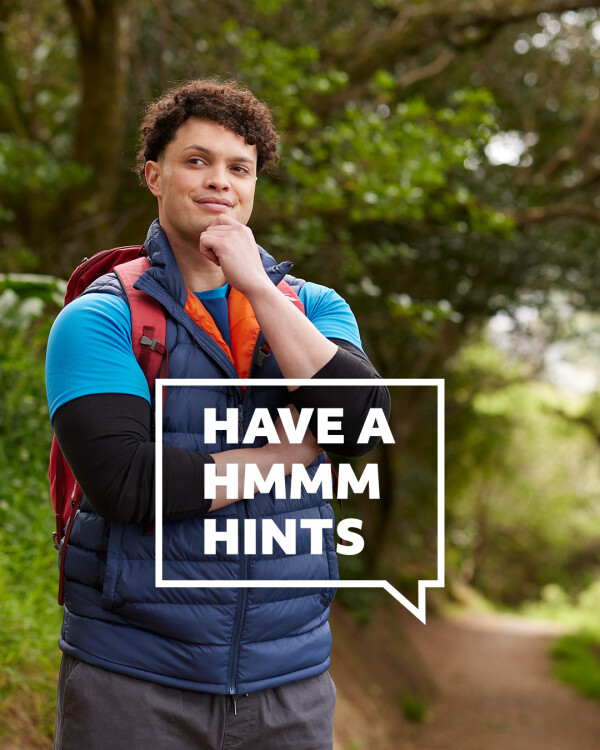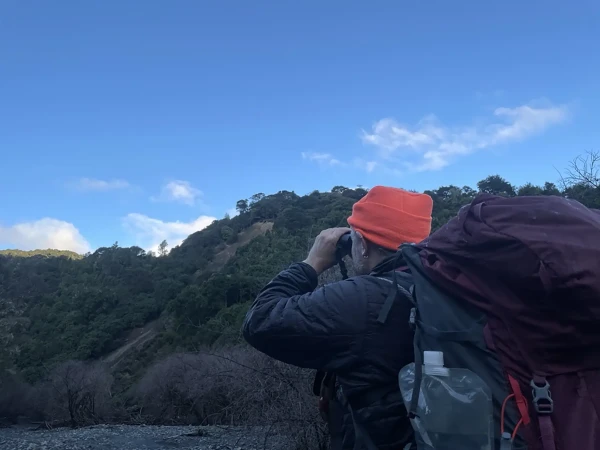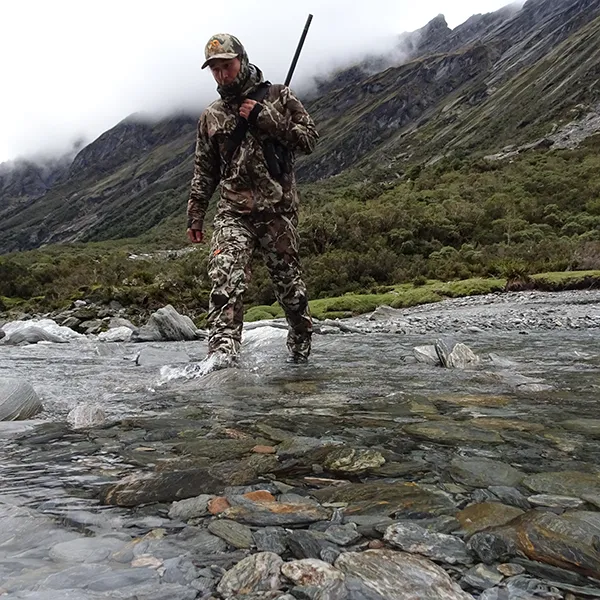Every year, thousands of Kiwi hunters head into bush, up hills and across ridge lines.
Check out our tips and resources to keep on top of your trip planning and fitness so you can set yourself up for a safe and successful hunt, whatever the season. Without quality training and preparation, hunters can sustain severe injuries with potentially long-lasting consequences.
Make a Plan and Hunt the Plan
Even a quick plan will help you have a successful hunt.Prepare for Your Hunt
What you take with you will make all the difference if something were to go wrong such as getting lost, delayed or injured.
Hunting Trip Essentials
- Waterproof Jacket
- Headtorch
- Emergency Communications Device (Beacon)
- Warm Clothing (fleece or wool)
- Hat and Gloves
- Sturdy Footwear
- Water and Food
- Emergency Shelter (one that is suitable for the conditions and terrain)
- First Aid Kit
- Clean and bright blaze gear
- Map and Compass or GPS
- Packliner + Pack
- Sun protection
- Whistle
You’ll also need permission or a DOC permit to hunt on the land and a current NZ firearms licence
Download our printable gear list or create your own custom gear list on Plan My Walk
Whether you’re doing a local hunt or backcountry adventure, every hunt has its own risks. Carefully consider what to expect and choose a route that suits everyone in your group.
- What is the ability, skill and fitness level of everyone in your group?
- How will you get there? Where will you stay?
- What will the weather be doing? How will you get help if something goes wrong? Will there be cell phone coverage in the area or do you need to take an emergency communication device?
- How long will it take to complete your trip? Will there be enough daylight hours?
- What is the terrain like? Will there be rivers/bluffs/steep ridgelines?
Find out what your trip will involve. Here are some ideas to help get you started:
- Sign up for free to use Plan My Walk to build a custom track and gear list
- Use a topographical map to find out more about the terrain
- Check whether you’ll need a DOC hunting permit
- Talk to experienced hunters about the area.
Share Your Plan
Always share your trip plan with a trusted person so someone knows where you’re going and when you’ll be back. Plan My Walk is a great tool for building a complete trip plan and route, and then sharing it.
Every hunt is unique, so fitness requirements depend on hunting goals, location, access, transport, group size and more.
To-Dos
- Set your goals
- Warm-up and stretch
- Build your strength
- Gradually increase difficulty
- Hit the hills (even better with full gear and a pack on your back)
- Train on uneven tracks
- Learn your limits
More Reading
Winter
Winter hunting, particularly in alpine terrain, requires a greater level of preparation, and the skills and equipment to navigate snow and ice. Careful route selection, with an eye on the weather, daylight hours and the avalanche forecast, are other key considerations for a safe alpine hunt at this time of year.
Skills and equipment
For winter, you'll need warmer kit and good quality boots with ankle support and tread. Along with your trip essentials, take:
- A synthetic or down puffer jacket
- Softshell trousers
- Thicker gloves and beanie.
A glassing pad is also useful for keeping insulated from the cold or frozen ground.
Route planning
Planning a conservative route is paramount in winter, particularly in alpine terrain. Be adaptable and flexible when selecting a route and consider:
- Shorter daylight hours
- How the freezing temperatures after dark will affect the terrain, for example rockfalls, scree, slips and snow grass will be slippery.
- Avoiding hazards, like steep drop-offs, where a small misstep could result in a treacherous fall.
- How you will recover an animal. If daylight hours are running out, it may be best to wait until the next day
Avalanches
If you’re going into the alpine, it’s essential to have winter alpine equipment, skills and experience. You’ll need an ice axe, crampons, a helmet, and an avalanche transceiver, probe and shovel – and you’ll need to know how to use them. The Alpine Snow Skills series is a great place to start. Then, get the training. See the list of avalanche course providers.
Always check the NZ Avalanche Advisory for the latest forecast during your planning and again before you leave home, and choose routes that avoid avalanche terrain.
Spring
Spring brings longer days and warmer temperatures, but don’t be fooled. Not only is the weather unreliable, spring hits differently in the mountains. Even on a sunny spring day, pack the full kit, especially in the hills where you could still encounter wintery conditions. Be prepared for cold temperatures, rain and wind as well as snow and avalanches if you’re venturing into alpine terrain.
Summer
If you haven’t been hunting over the winter and spring months, give some thought to your fitness and do some planning for your first trip out in summer. This will ensure you not only have a good time but also avoid needless injuries.
Build fitness
If you’re out of shape, start small, set realistic goals, and build strength and endurance gradually. Once you’ve got a baseline fitness, introduce full gear and your pack on the hills to really test yourself before the real thing.
Go prepared
Storms can hit at any time of year, so keep an eye across the forecast for any incoming heavy rain that will impact rivers. Pack an extra dehydrated meal, an emergency shelter and an emergency communication device. If a river isn’t safe to cross on your way out, you can stay put until it drops.
Severe hunting injuries double during the Roar compared to an average month, making fitness crucial for both your enjoyment and safety. If you’re not hunt fit, start your preparation early to ensure you can cover more ground comfortably, stay injury-free and make the most of your hunting trip.
We’ve developed a free 12-week #ROARfit guide to help you on your fitness journey. If you have less than 12 weeks, don’t sweat it – any fitness is better than none. There’s no better time to start than today!
During your Hunt
Be sure that you've got each other's backs.
- Share the load by not doubling up on gear and dividing it between you.
- Check in with your mates about which route to take and the areas you're heading for.
- Keep close enough to communicate quietly once you're in the hunting area.
- Make sure you are clear on what type of game you are after, so that you're on the same page.
- Trade off shooting and spotting roles, confirming your zero, before the trip.
More reading
Manage your exposures to falls
During the planning phase identify terrain hazards you’ll encounter, such as bluffs and gullies, on the way to the best hunting areas. On the day, make decisions based on everyone's comfort level with the terrain, and think about the likelihood and consequences of a fall. Before you shoot, consider the terrain and whether it will be safe to recover your animal.
Consider reading
You are responsible for ensuring that your firearm is always handled and stored properly. The seven firearms safety rules are simple to understand, easy to follow and will prevent serious accidents. All firearms incidents can be traced to one or more of these rules being ignored or broken.
Remember, if you don't have a reason for your firearm to be loaded, it shouldn't be.
Read more on
Consider the Mental Shortcuts
- If you’re experienced, remember that it’s normal to get complacent, underestimate risks and over-estimate your ability. Selecting the right route for your group is critical to a successful hunt. If the conditions or terrain changes, or someone is finding it too challenging, be prepared to change your route to one that better suits the new circumstances. Always keep in mind terrain traps, such as bluffs or cliffs.
- Stop, think, assess, and talk with your mates about your options. Consider the likelihood of a fall and the consequences if you were to lose your footing. Manage the risk by avoiding terrain traps.
Have a Hmmm
We all like to push our limits. ‘Having a hmmm’ means slowing down, paying attention to the terrain and watching your footing. Remember, it’s never too late to turn back if the conditions or terrain worsen. Take time to talk to your group so you make good decisions together.
- Slow down
- Watch your footing
- Take extra care when selecting your route
- Be aware of terrain traps, like bluffs

External Resources
- Better Hunting Aotearoa
- Department of Conservation
- NZDA Hunts
- Te Tari Pūreke - Firearms Safety Authority
- MetService
- Windy
- NIWA
Further MSC Resources
- Plan My Walk - Use the custom gear lists and track builder to help support all your trip planning. Complete the trip plan by adding in the trip dates and group members, then sharing with your emergency contact.
- NZ Land Safety Code - Brush up on the basics ahead of any trip.
- NZ Avalanche Advisory - Always check the forecast before heading into avalanche terrain.
- Subscribe to hunting newsletter - Stay up to date with all our hunting tips and insights.
Read our stories
- Stay on Top of Your Game for Spring Hunts | Sept 2024




